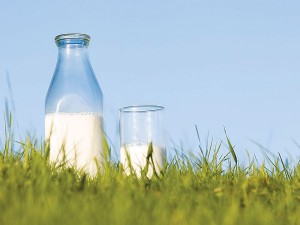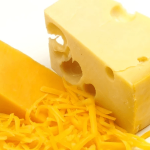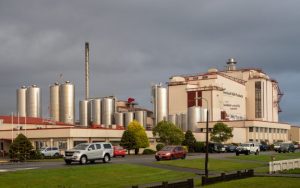
The underlying assumption is that many of the disruptions in China will normalize by the end of Q2 2020.
Rabobank believes there has been a shift in the global market fundamentals. A material reduction in China’s 1H 2020 import requirements looms over the global market balance. Chinese dairy import volume is forecast to fall 19% in 2020.
It is essential to assess this within a historical context. The forecast reduction in China’s 2020 imports is not expected to be as severe as the 2014-2015 destocking, which resulted in a decline in liquid milk equivalent (LME) imports of more than 35% over 12 months.
Against this backdrop, milk production is growing in the export regions. The combined milk pool of the Big-7 dairy exporters gained momentum in the closing months of 2019. Looking forward, Rabobank forecasts the export engine to hit its straps in Q2 2020 with a growth rate of 1% − marginally higher than the five-year average of 0.8%.
There are some supportive developments for global market balance. The impact of drought in New Zealand’s North Island is limiting production availability as the season winds down. This has partly countered the disruption in trade volumes to China. While Oceania’s commodity prices have retreated, the declines have been relatively modest.
EU
EU milk production gained momentum in the closing months of 2019. Milk production increased 1.0% YOY in November and 1.4% in December, resulting in +1.0% YOY for Q4 2019 and +0.6% YOY (+966,000 metric tons, or mt) for the full year.
The primary EU member countries contributing to the growth were Ireland (416,000 mt), the UK (240,000 mt), and Poland (229,000 mt). Milk volumes in Germany and France – the two largest milk-producing countries in the EU – finished close to the previous year’s levels despite the recovery in 2H 2019.
The EU is carrying a smaller herd into 2020. In 2019, the EU-28 dairy herd declined by 280,000 head (-1.2% YOY). In most regions, lower cow numbers were offset by increasing per cow yields.
Farmgate milk prices continue to improve but there are headwinds ahead for further increases. Since October 2019, the EU-28 average milk price increased by EUR 0.42 to EUR 35.36/100kg in January 2020. The average milk price for 2019 at EUR 34.43/100kg posted a modest year-on-year gain of EUR 0.32/100kg.
US
US 2019 milk production increased a meagre 0.4% compared to 2018, the lowest YOY increase since 2013. States experiencing the most significant losses ranged from the Corn Belt through the Northeast. Milk production should begin to grow closer to the long-term trend of 1.5% YOY in 2020.
The number of licensed dairy operations decreased at a faster rate than usual, down 8.8%, with a loss of 3,281 operations in 2019. In most cases, this was a result of consolidation, with states like Minnesota and Wisconsin experiencing significant declines in the number of farms, but steady to increasing milk supply.
Mild weather conditions are contributing to greater output and discounted surplus milk. The well-supplied milk markets at this time of year raise concerns about what the next couple of months may hold, given that we have yet to enter the spring flush.
The looming threat of the coronavirus raises additional market uncertainty. The coronavirus will not impact milk production but could impact the ability to process the milk.
Australia
December 2019 marked an important milestone for the dairy sector. For the month,
the combined milk pool of the southern export region expanded. This was the first monthly increase since mid-2018. National production grew by 0.5% in January, confirming minimal impact from the bushfires. Season-to-date milk production stands at 5.6bn litres, down 3.7%. The turnaround so far has been led by Tasmania and Eastern Victoria, which account for 32% of Australia’s milk production (see Figure 6).
Rabobank is forecasting Australian milk production to finish 4.9% lower by the end of the 2019/20 season at 8.4bn litres. Australia’s milk pool is in a good position to rebound in the new season. But constraints to recovery exist – namely the need to rebuild herds.
At the halfway mark of the season, Australian dairy export had fallen by 6.9% YOY to 383,000 MT. A return to growth in milk production will bring some welcome relief for dairy exporters. More milk in the system will boost plant utilisation and a return to growth on the exportable surplus in Q2 2020.
New Zealand
Weather has been volatile at both ends of the islands, impacting milk production differently. Seasonal, dry conditions have hit many North Island regions and parts of the South Island, hampering milk flows.
On a milksolids basis, January 2020 milk production increased by 1.1% YOY. The 2019/20 season-to-date collections are now just 0.4% higher than last season.
February 2020 data will illustrate further pressure on milk collections.
There is a risk that the milk production season finishes abruptly in the North Island if significant rain is not received through the final weeks of March. While marginal economics support supplementary feeding, some farmers may choose to conserve feed and preserve cow condition prior to winter and call the season to a close early if seasonal conditions remain unfavourable.
Accordingly, Rabobank has revised lower its expectations for milk collections across the 2019/20 season, and now anticipate milk production to decline by 1% for the full season.
New Zealand dairy export volumes will be negatively impacted through 1H 2020. This is due to weaker trade to China as a result of the coronavirus and strong 2019 comparables.
Fonterra has held its 2019/20 forecast farmgate milk price range.
The range remains NZ$ 7.00/kgMS to NZ$ 7.60/kgMS. Based on a weaker forecast for Q2 2020, Rabobank now anticipates a milk price of NZ$ 7.35/kgMS for the current 2019/20 season.

























